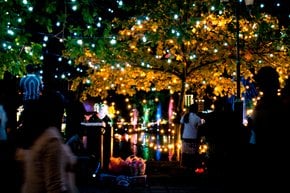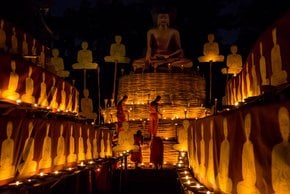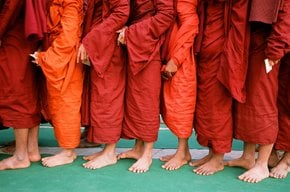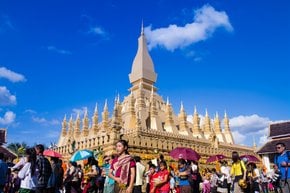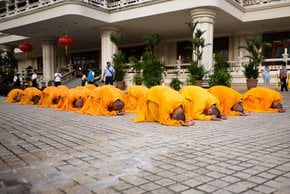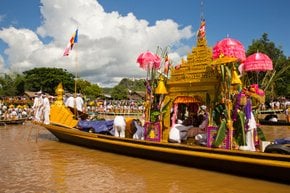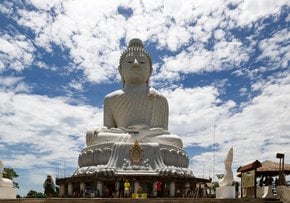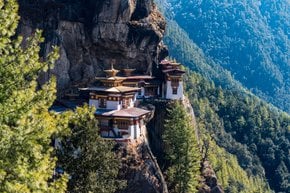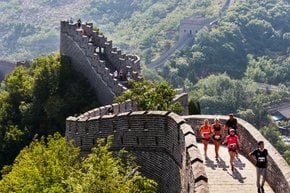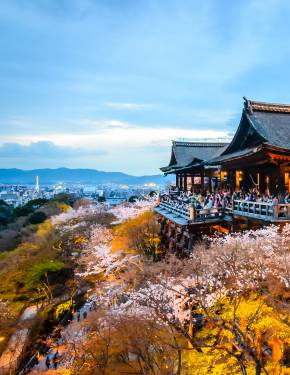Leshan Giant Buddha in China 2025
World's largest Buddha was erected at the junction of three mountain rivers in order to calm down turbulent waters and save local people's lives
Best time: March–May | September–November
Leshan Giant Buddha or Dafo impresses with its astonishing size, as well as its relaxed posture, and mystical aura overall. Look at the details, and you will notice his hands resting on his laps, also those heavy-lidded thoughtful eyes watching far in the distance, and a hint of a smile on the lips. Leshan Buddha is 71 meters high and 28 meters wide, and if he stood upright, he would probably be the height of the Statue of Liberty. His head's size equals a small house, and his foot is able to place around a hundred of people. Even his ear could also room a couple. Seven-meter long ears are the only part made of clay-covered wood, while the rest of the statue is purely carved rock. Looking at Buddha's carefully sculpted curly hairs, one might only assume what a painstaking work it must have been to construct the statue. Well, according to the legend, it was literally painful for its constructor, who had to sacrifice his eye for the sake of Dafo.
It all started back in the late seventh century when a monk named Hai Tong became concerned about local people who continuously died in turbulent waters at the junction of three mountain rivers—Min, Qingyi, and Dadu. He decided a statue of Buddha erected at that very place would calm down the waters, so he started collecting money, and it took him twenty years before he was finally able to start the work in 713. At one moment he got in trouble with the government and could lose the money meant for the construction of the statue. That's when he gouged one of his eyes out to prove his sincere intentions. This desperate sacrifice convinced the government people. After Hai Tong's death, two of his disciples continued the work, and it was finally finished by a local governor in 90 years, that's in 803. Since then the waters have been much more merciful and took away much fewer lives. The monk's wish came true—Giant Buddha has tamed the waters. Or these were stone remnants thrown to the river while the statue was being carved. If you wonder how it could remain practically intact throughout all these years, it's all thanks to secret drainage system made of inner gutters and channels.
So, nowadays you will find the monument at the very same rivers' junction in Mount Lingyun which sits opposite to the sacred Mount Emei. That's near the city of Chengdu in Sichuan Province. The statue is actually believed to be Maitreya, a Buddha and disciple of Sakyamuni, the supposed founder of Buddhism. It's the symbol of brightness and happiness. The figure of Maitreya was particularly worshipped in the past, namely in the fourth to sevenths centuries. Nowadays, the image of Maitreya might be found in a range of Buddhist temples, and Leshan Giant Buddha annually attracts millions of pilgrims.
The best time to see the ancient statue is spring and autumn, as these two seasons offer the most convenient weather for hiking in the area.







